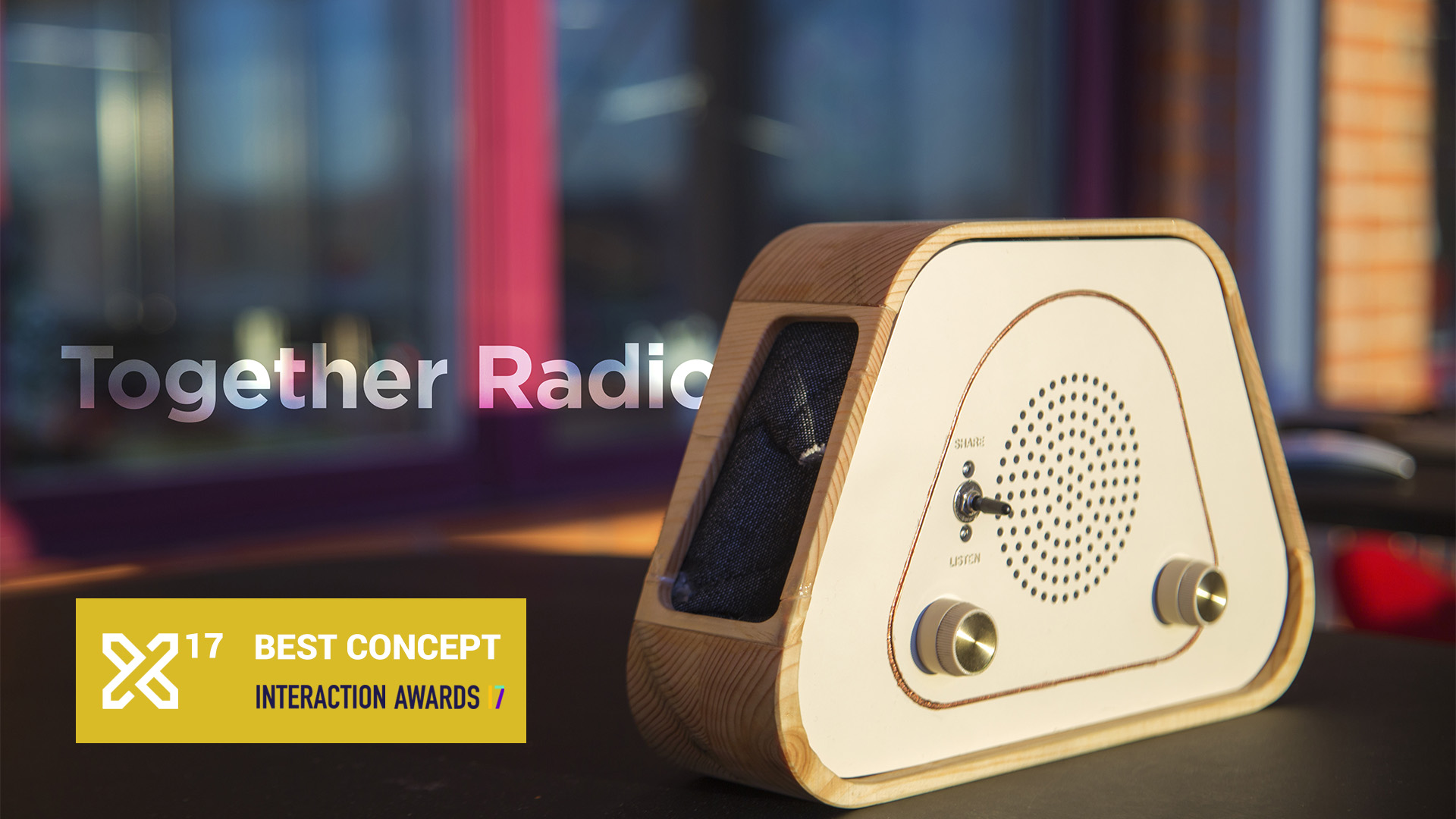
Together Radio
Designing for Faceless Interaction.


About the Project
The brief of the project was to explore faceless interaction methods and design a fiction in context of the home of 2035 with respect to our own cultural background, in my case, India. A considerable part of my research in this project has gone into exploring interactions for tactile communication.
It is estimated that a majority of India’s crimes against women happen in the rural parts of the country. However, due to poor connectivity, most of these crimes never get reported today. With the Indian Prime Minister, Narendra Modi, approaching Facebook and Google to invest and bring connectivity into the country, my fiction is this world where the country sees a spike in the number of crimes reported.
In this scenario, a NGO called the Together Foundation is formed that directs its focus towards the huge number of victims of crime. But the victims prefer anonymity and due to the closely knit structure of Indian rural communities, they are unable to physically meet and share in support groups, something that is a critical need for such a community of people.
To solve this issue, they come up with a device they call the Together Radio. The device tries to connect various victims of a particular type of crime anonymously while enabling sympathetic expression through touch thus providing moral support and attempting to form an anonymous support group.


Design
The device caters to two main anonymous user groups: The Sharer and The Listener. An individual sharer can narrate his/her experiences to many listeners. The device is designed to enable tactile expression of sympathetic emotions between these anonymous users while maintaining a cozy and comfortable form.
The device supports complete anonymity while providing adequate feedback to The Sharer as an attempt to make the user more comfortable sharing his/her experiences.
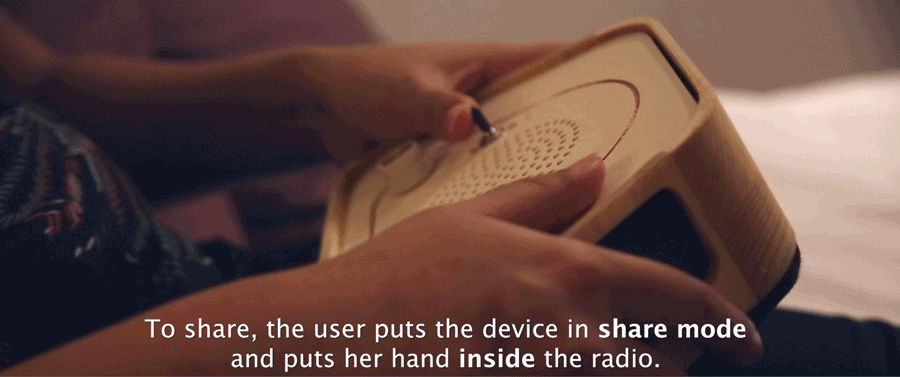
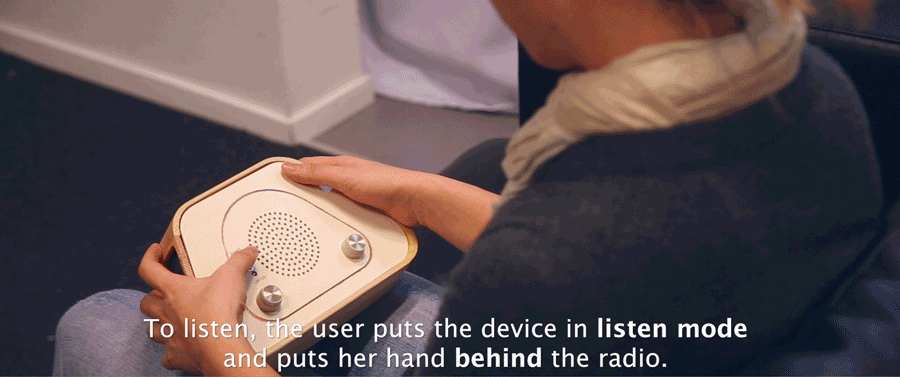
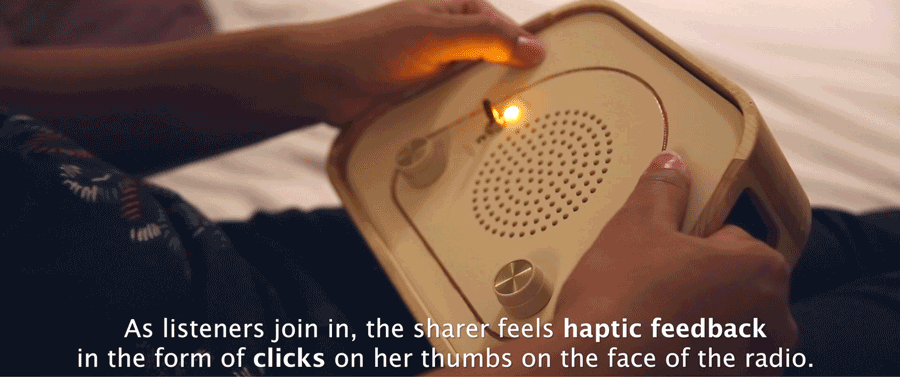
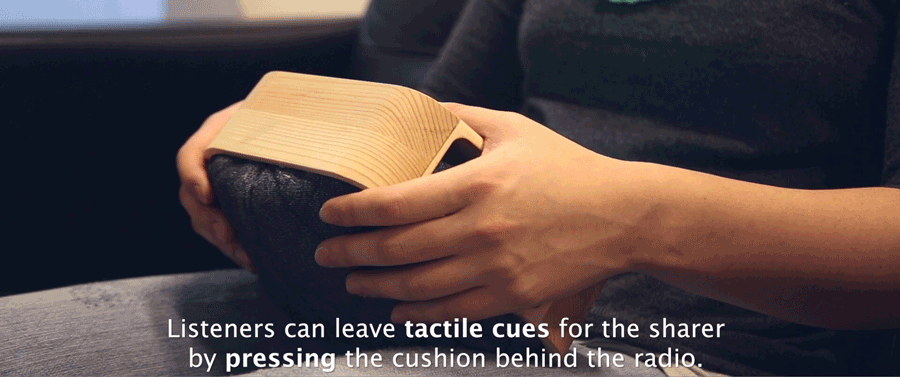
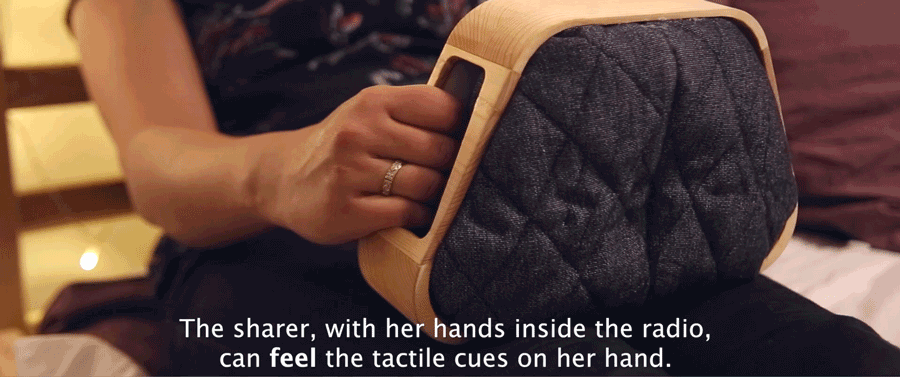
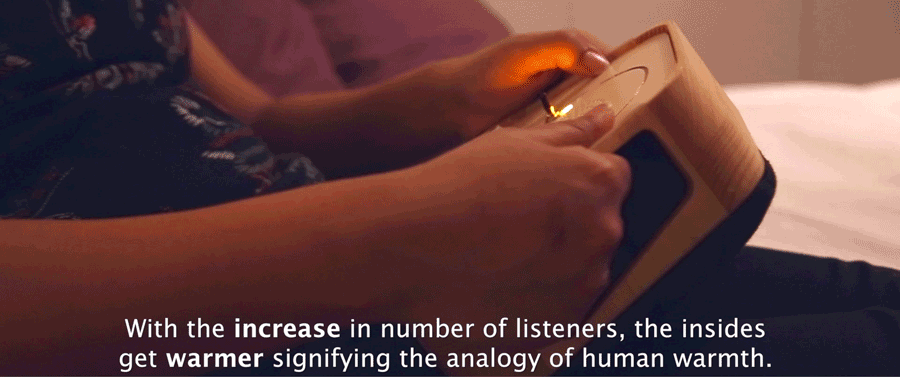



Process
The project kicked off with understanding the true meaning of Faceless Interaction. An emphasis on was laid out on what trend forecasters were predicting about the future. Interesting insights were gathered from talks of various such people that helped shape the structure of the design fiction storyline. Later, the focus of the project moved towards discovering tactile communication patterns.


Understanding Touch
At the beginning of the project, I did a series of mini experiments to personally understand the importance of touch. The one shown here is where I put wood glue on my finger and let it dry off. The dried layer of glue reduces the sensation of touch on the fingertips. Reflecting on a couple of experiments like this helped me understand the importance of tactile feedback in our day to day scenarios.

Using woodglue.

Letting it dry.
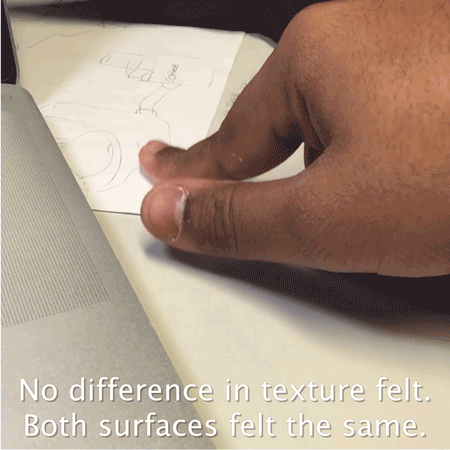
Testing for loss of touch sensation.

Can Emotions be expressed through touch?
I devised an experiment to understand whether emotions can be conveyed through touch. Several research papers pointed to the fact that the hands were more sensitive to tactile communications as compared to the rest of the body.
The papers helped me narrow down on the emotions to test. They were Anger, Disgust, Fear, Happiness, Sadness and Sympathy.
The experiment was conducted with 26 people in multiple sessions, each session involving two people. The most interesting outcome of the experiment was that the same gesture was recorded for sympathy in every session across all participants.

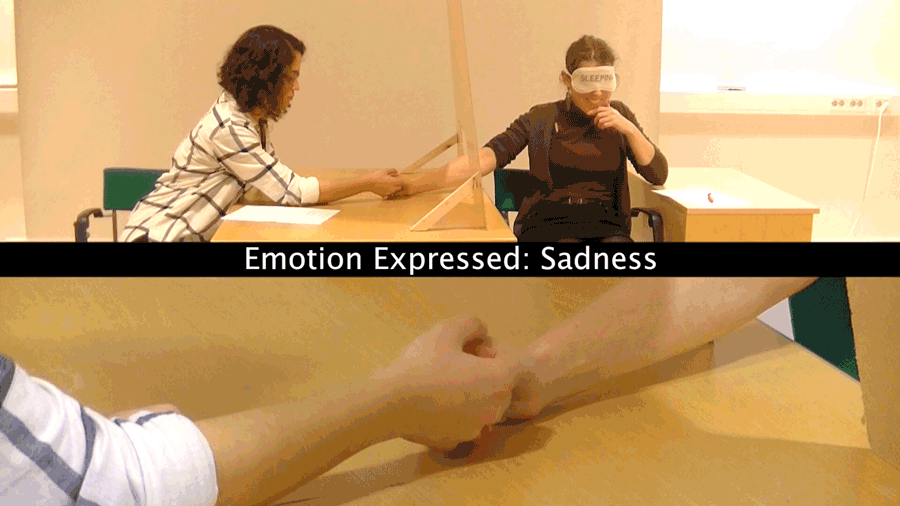


Prototyping
The prototyping process included exploring multiple variations of what the device might look like. I gave ergonomics a great importance in this process and took out variations from angles derived from console game controllers. I played a lot with haptics and fixated on a "double-click" vibration for the feedback. The internals including the servo motors, heat pad and inter-device communications were enabled through programming in Arduino.
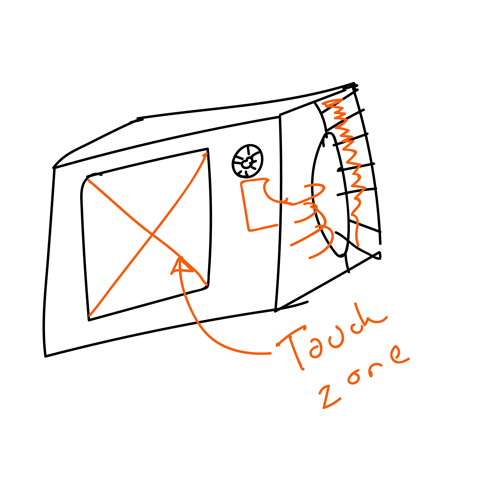
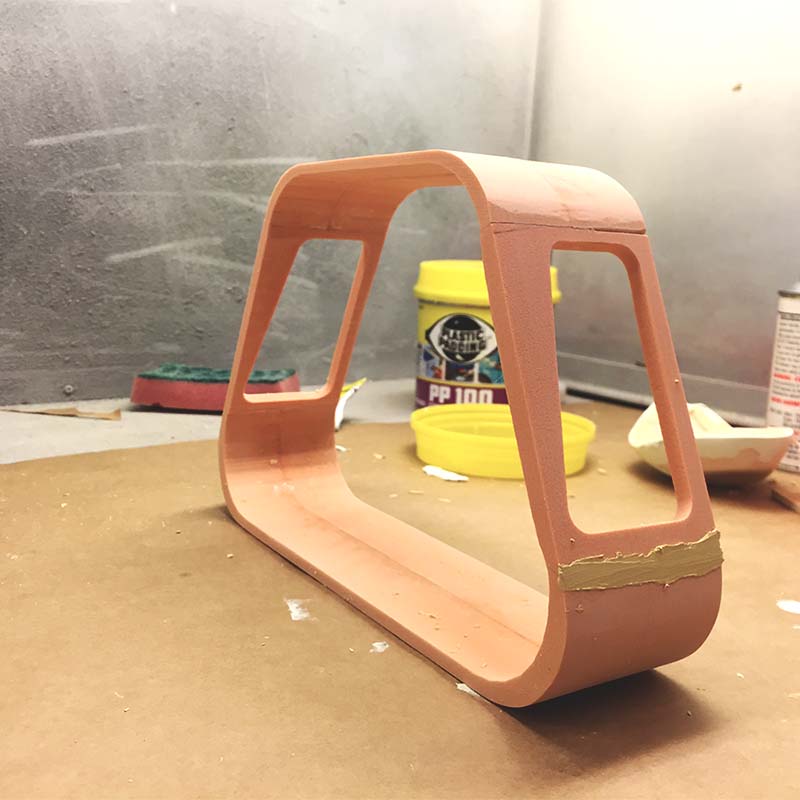
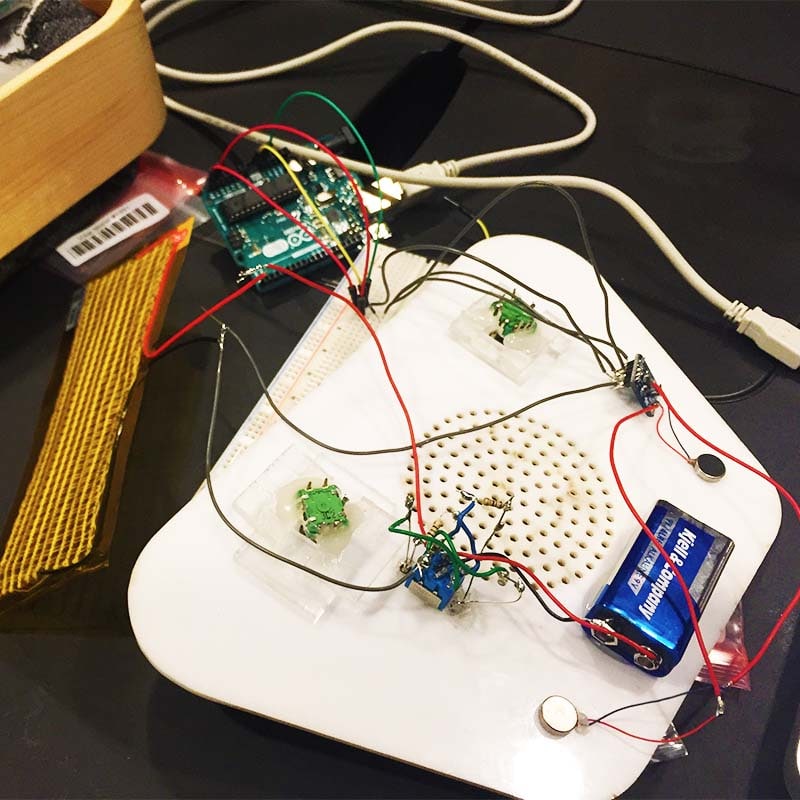
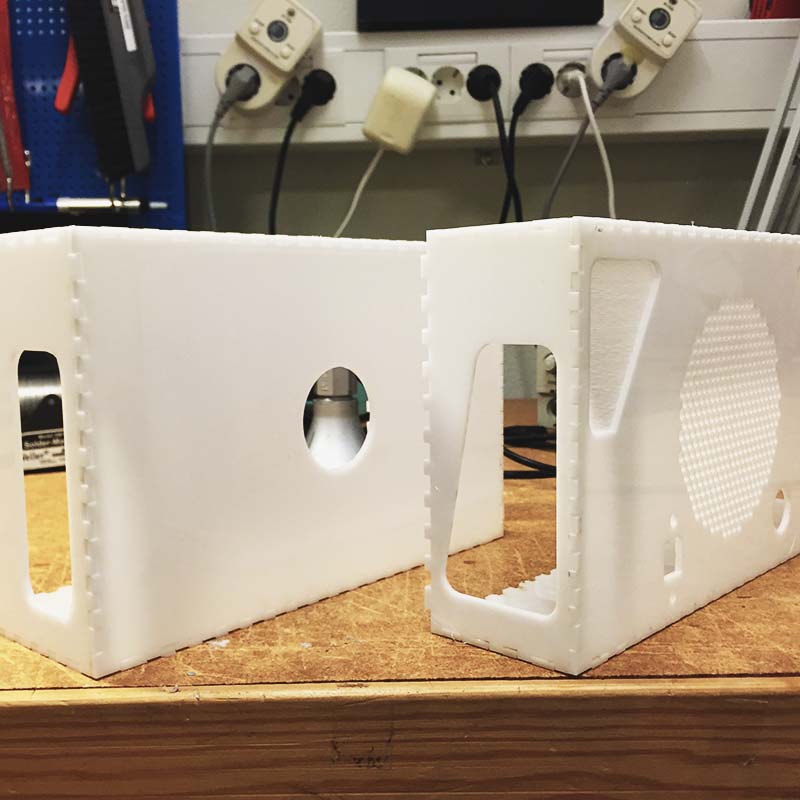



Exhibition
After completion, the project was exhibited to public at Humlab-X, Sweden.

Awards
Thank you for viewing.

Together Radio by Sreyan Ghosh is licensed under a Creative Commons Attribution-NonCommercial-NoDerivatives 4.0 International License.


